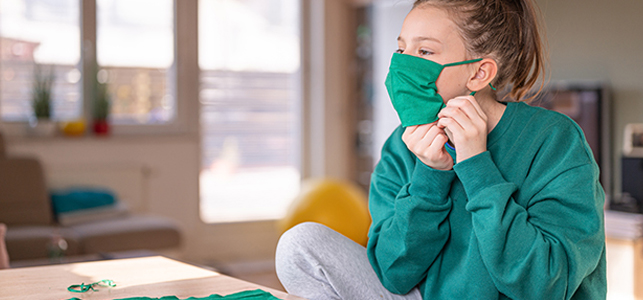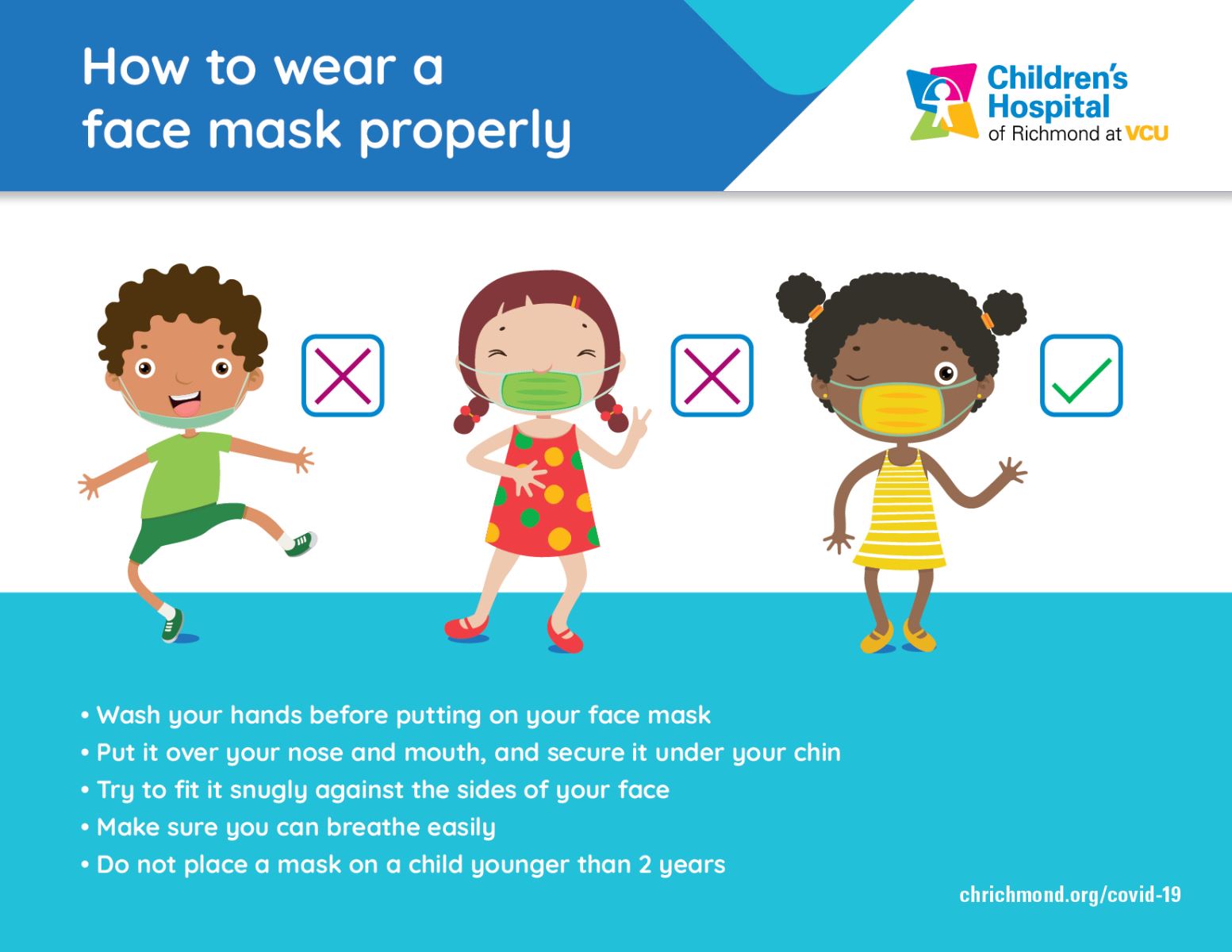
Published April 7th, 2020
Updated August 25th, 2020
As our communities start to re-open, it's more important than ever to help protect everyone by wearing face masks.
The Centers for Disease Control and Prevention recommends wearing cloth face coverings over the nose and mouth in public, particularly when social distancing can be difficult (such when going to the grocery store).
As of May 29th, people in Virginia over the age of 10 are required to wear a face mask in public.
CHoR encourages everyone over 2 to wear a face mask in public.
Why wear face coverings?
Recent studies show that many people with coronavirus are asymptomatic (not showing symptoms) or pre-symptomatic (not showing symptoms yet, but they will develop). In both cases, these individuals can spread the virus without knowing it.
What type of face mask should be used?
For average everyday use, the CDC recommends cloth face coverings, such as a scarf or mask made from common household materials as demonstrated by the U.S. Surgeon General in this video. The CDC also provides sew and no-sew instructions on their website. The cloth face coverings should fit snugly but comfortably against the sides of the face, include multiple layers of fabric and allow for ease of breathing. Please keep in mind that surgical masks and N-95 respirators are in limited supply and should be reserved for health care workers.
Learn about different mask types
Encouraging kids to wear masks
We strongly recommend not taking children to public places during the pandemic, but understand that sometimes staying home is not an option. Our child life specialists recommend the following tips for encouraging little ones to wear their masks.
- Be honest and give age-appropriate information about why it’s important to wear a mask, such as “This virus is making a lot of people sick, so doctors are saying it’s best to wear a mask when grocery shopping. The mask helps keep your body safe. We won’t always have to wear a mask to the grocery store, but right now it’s really important.”
- Practice wearing the face covering at home and show your child how to use it to properly cover the nose and mouth.
- Make a mask for their favorite stuffed animal to wear when practicing too.
- In the event that you have a paper/disposable mask, color a silly face on the outside to make it more fun and less scary.
*Important note: Face coverings should not be placed on children younger than age 2 or others who would not be able to remove the mask without help.
How to clean your mask
Cloth face coverings should be washed regularly in the washing machine. Remember to be careful not to let it come in contact with the eyes, nose or mouth when removing it and wash hands immediately afterward.
Do face coverings take the place of social distancing?
Definitely not! Maintaining social distancing (staying at least 6 feet from other people), ensuring thorough hand washing and frequently disinfecting high-touch surfaces remain critical in preventing the spread of the virus. Face coverings are an extra step to further protect ourselves and others throughout the community.
Who shouldn't wear a mask?
Masks should not be placed on children younger than 2 or those who are unable to take the mask off themselves or communicate to a caregiver that they need it to be removed. If your child has breathing difficulties, be sure to check with their doctor to determine if it is safe and appropriate for them to wear a mask.


.jpg)